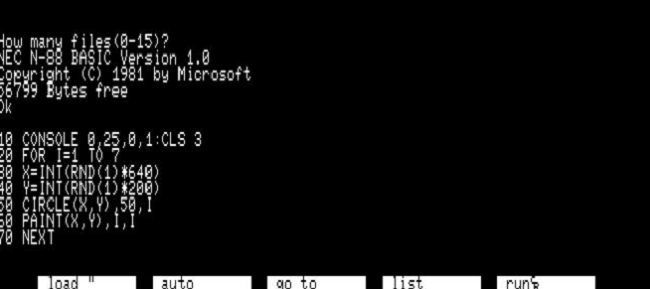On May 1st, 1964, two Dartmouth professors by the names of John Kemeny and Thomas Kurtz debuted BASIC, a revolutionary programming language credited for expanding computer literacy outside the realm of wizardry, and into that of the laymen. Beginner’s All-purpose Symbolic Instruction Code, or BASIC for short, was the first of its kind, high-level programming language designed to be as beginner friendly as possible.
Their goal was ambitious, seeking to make computing as accessible as possible, by eliminating the need to program directly in assembly. “Our vision was that every student on campus should have access to a computer, and any faculty member should be able to use a computer in the classroom,” Kemeny said in 1991.

Prior to the onset of BASIC, the first generation of computer programming translated programs from paper punch cards that were read line-by-line. It’s best described by TIME magazine’s Douglas Engelbart as, “playing chess by mail.” First, the program was entered on a card using a keypunch. Next, the card was given to a trained operator to input. And finally, you waited many hours for the results to come back.
However, because BASIC worked through a compiler, commands were translated from logical words into complex machine language, allowing users to convert an entire string of plain-English characters in one shot, thus, exponentially speeding up the process.
The Project was exclusively designed for use with Dartmouth’s Time-Sharing System – the mainframe used at the time – but later released as open-source after surpassing its original size and scope. This decision, coupled with the microcomputer boom of the late 1970s, helped dispense the BASIC programming language across a vast chunk of the market share. In fact, it was at this time that a modified version of BASIC helped Micro-Soft – which would eventually become Microsoft – launch their immensely successful precursor to windows.
Perhaps it can even be said that early interest in computer programing sprouted as a direct result of BASIC. Since the majority of microcomputers released between the '70s and '90s came equipped with a BASIC interpreter, users were, for the first time ever, granted immediate access to a programming language as soon as the system was activated. This spawned an entire generation of people whose hobbies now included writing programs and solving puzzles from early computing magazines, such as Creative Computing.
The subsequent evolution of computer systems that booted directly into an operating system, such as Windows, saw BASIC decline in popularity. Users no longer needed to learn a programming language to simply “use” their computer; a fully loaded graphical user interface streamlined the process. Nonetheless, BASIC is still in use today, even at the age of 50; the computer language powers macro programming in Microsoft Office as well as aspects of Visual Basic.
Via TIME, Gizmodo, and bit-tech
Advertisement





